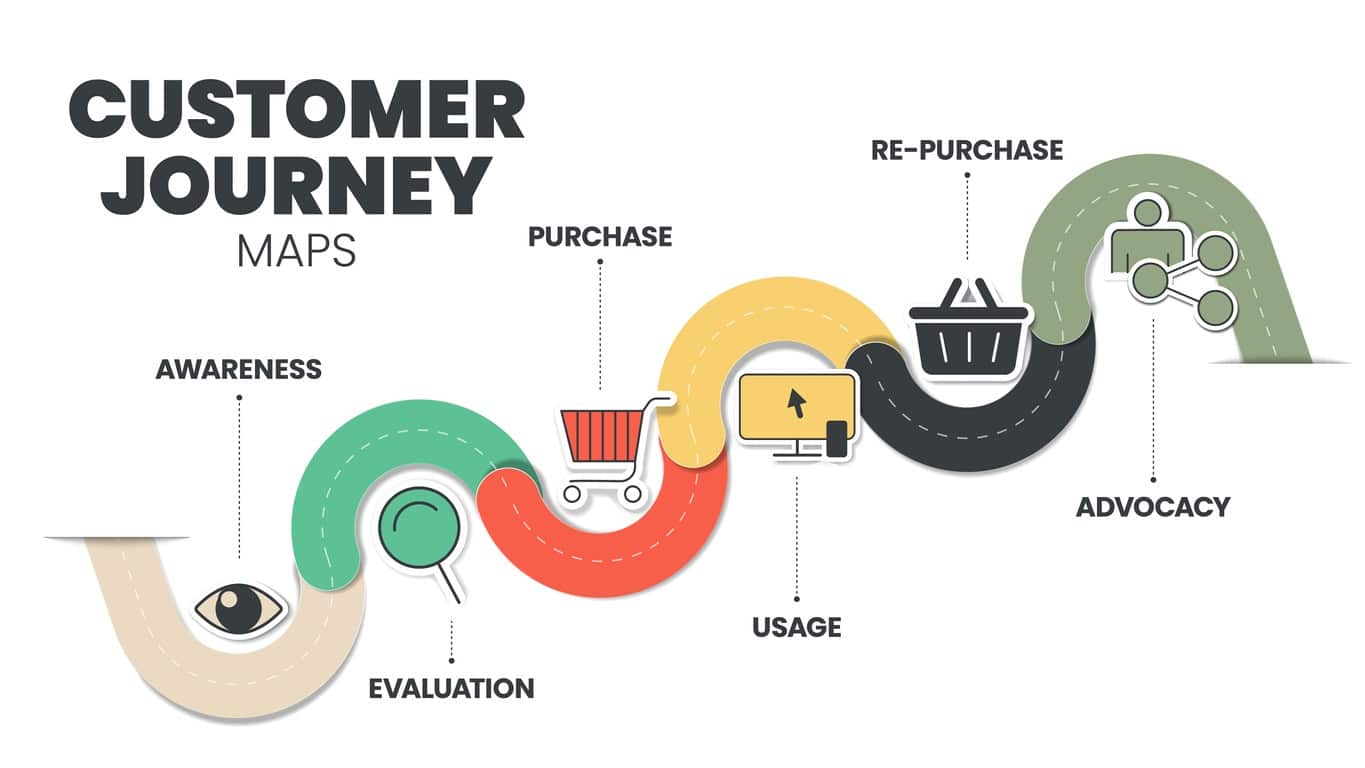Call Center Customer Journey: Importance & Best Practices
Customers are at the heart of business success. According to Deloitte research, customer-centric companies are 60% more profitable than those that don’t focus on their customers. In addition, 73% of consumers point to customer experience as the primary driver of their purchase decision, next to product price and quality.
When you partner with a customer-focused provider like a call center, your organization has the opportunity to improve the customer experience by understanding the customer journey. In this guide, we’ll look into the customer journey in a call center and how your business can use it to improve the customer experience.
What Is the Customer Journey in a Call Center?
The customer journey represents the path customers take through the stages of their relationship with a company, from discovery to purchase. It includes all interactions between the customer and the business across several channels. The customer journey is not linear and might differ from person to person. For example, one customer can begin the journey when they discover your website via search; for another, it may start when a sales representative reaches out through cold calling.
Businesses can further understand and visualize the customer journey by creating a journey map. Often expressed as an infographic, the customer journey map provides a complete snapshot of all customer interactions across all touchpoints and platforms. When combined with multichannel data, this map can help brands identify their clients’ pain points and provide valuable insights about how to improve the customer experience.
Every call center interaction represents one touchpoint in the customer journey. Because they directly connect with your customers, call centers uniquely position themselves to reap the benefits of a well-analyzed customer journey map.
Why Is It Important?
There are several benefits to mapping the customer journey for call centers, including the following:
1. Identifies & Resolves Inefficiencies
Customer journey mapping can help businesses identify gaps and deficiencies in their customer service and deploy resources to improve customer experiences. Interactions that require a great deal of effort or require too many steps can frustrate customers. By creating a customer journey map, you can assess if this is the case for your business. For instance, you can analyze individual customer call center data to determine how many times customers are transferred or asked to repeat their concerns.
For call centers, this information can reduce redundancies or identify a need to replace tedious processes that cause friction throughout the customer journey.
2. Pinpoints Resolution Opportunities
Call centers map the customer journey to help agents decide which channels to use and how to resolve customer issues. As a result, your organization can invest more in improving client communication channels as you identify them.
Prioritizing valuable channels can also help your organization allocate its human resources effectively to ensure that agents are ready to serve customers at the most significant customer journey points.
3. Understands Customers Better
By breaking down the customer journey into stages, businesses can identify customers’ barriers, worries, or doubts that inhibit them from purchasing or continuing to use your products. For example, if a customer reaches out to your business via call, yet you don’t have an efficient system to route them to the right agent, they might find it hard to find solutions for their concern. This annoyance results in a negative customer experience that leads to customer churn.
4. Empowers the Organization
Mapping the customer journey is a collaborative effort that involves your organization’s marketing, product development, sales, and support departments. Your team members grasp their role in improving the customer experience as they deconstruct customer interactions with your company. They also understand the customer’s underlying objectives, making it easier to align their actions to deliver positive customer experiences.
Businesses that leverage a customer journey map also get an overview of customer volume. This perspective lays the groundwork for effective workforce management and identifies opportunities for outsourcing or restructuring.
How to Create a Customer Journey Map
A customer journey map can help your organization understand how customers experience your business. This valuable tool can help your company improve service quality and customer satisfaction. Here’s a comprehensive guide on creating one for your business:
 1. Gather Data
1. Gather Data
The customer journey presents the progression of events when a client discovers your brand. Rather than making assumptions about your customers, it’s critical to know exactly what transpires in the process through data analysis. Consider collecting customer feedback, holding focus group discussions, or conducting interviews. Some companies outsource to third-party companies to conduct in-depth market research to learn about their market.
2. Create Customer Personas
Leverage your gathered insights to craft relevant buyer personas that represent your customers. These personas can help your organization understand what your target customers want, how to empathize with them, and how to meet their needs. Every persona has a different experience and will require a different customer journey map based on their unique behavior, goals, and needs.
3. Determine Customer Touchpoints
Customer touchpoints pertain to how and where your customers interact with your business. The customer journey in call centers can include touchpoints like social media, help desks, live agents, or sales calls. After listing them, identify your customers’ key activities in these channels. For example, if you have an eCommerce business, these activities may include placing orders, paying bills, or contacting customer service.
4. Start Mapping
Using the information gathered in the previous steps, you can now identify the critical sequence of events customers go through when they interact with your business. The process varies depending on the buyer persona, so create different maps for each. While there’s no one way to create the customer journey map, make sure to include the channels, touchpoints, actions, and the stakeholder assigned to each touchpoint, like marketing and sales.
5. Update and Improve
As new trends, technologies, and channels emerge, customer behavior and preferences can shift. Consider your customer journey map as a living document that evolves with these changes. If you add more customer touchpoints in the future, revise the customer journey and keep it up to date.
Best Practices in Mapping the Customer Journey in Call Centers
Mapping the customer journey can be challenging, and there needs to be more than a one-size-fits-all solution. These best practices can ensure that you create a helpful output that can aid your organization in understanding your customers better.
1. Collaborate
Your customers interact with different departments in the organization as they move through the customer journey. Therefore, each organization member needs to gain a bird’s eye view of the process. Seek input from different departments in your organization, especially teams with insights about customer interactions. Make this information accessible so every department can keep the customer in mind during their operations.
2. Measure the Outcome
Assess the success of your customer journey by identifying relevant KPIs and monitoring them throughout the process. For example, in the decision stage, you can track sales, conversion rates, and cost-per-conversion rates to analyze the effectiveness of your sales efforts. Third-party call center services providers like ROI CX Solutions provide relevant reports and analytics that make it easier for your company to evaluate this.
3. Ask for Customer Feedback
Customer journey maps can predict how clients interact with your business. However, your company should remain open to any changes that may happen in the future. Asking for customer feedback is one of the most reliable ways to identify their concerns and shifting preferences. Collecting and analyzing feedback can help refine the customer journey map to fit their changing needs.
4. Explore Technologies That Can Enhance the Customer Experience
Several new technologies can enhance the customer experience in the call center industry, from IVR systems to omnichannel solutions. Modern businesses explore outsourcing solutions to gain access to these technologies and to employ professionals who are experts in the customer service field. Embrace innovation, and consider outsourcing functions that can give your organization a competitive advantage.
Partner with ROI CX Solutions to Manage Your Customer Journey
Understanding the customer journey can help your business see through your customers’ lens and identify key improvement opportunities. However, crafting an accurate customer journey map can be a challenge. ROI CX Solutions can help. With our world-class call center solutions, you can ensure that every interaction in the call center customer journey is a positive experience. Reach out today to learn more!






